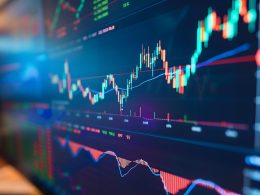by Christopher Gannatti, CFA Global Head of Research, WisdomTree
Key Takeaways
- Jeremy Schwartz spoke with Philippe Gijsels, Chief Strategy Officer at BNP Paribas Fortis, on a recent episode of the Behind the Markets podcast.
- Philippe believes that central banks may allow inflation to run at 3%–4% to alleviate debt pressure faced by western countries after the Covid-19 pandemic.
- Philippe sees a massive opportunity in the commodity space and predicts that gold could cross $4,000 per ounce over the coming years.
In a captivating episode of Behind the Markets, Philippe Gijsels, Chief Strategy Officer at BNP Paribas Fortis, shared profound insights into the current state and future outlook of the economy and global markets.
Global Economic Outlook
Philippe began the discussion by noting challenges we face but believing there are significant opportunities in various global markets. He emphasized the resilience of the European markets amid political changes and economic policies that continue to evolve in response to global economic pressures.
Higher Inflationary Waves for Longer
A significant part of the conversation revolved around the impact of interest rate changes and monetary policies on global investments. Philippe discussed how central banks across the world are navigating inflationary pressures and this is something he sees as being longer lasting. His view is that, even though the stated target for inflation is 2%, it’s possible that central banks will allow inflation to run at 3%–4%, as this could be helpful in alleviating some of the massive debt pressure faced by many western countries after the Covid-19 pandemic.
Philippe believes a combination of ageing, debt, climate change and the energy transition will keep an inflationary wave extended. The fact that the world is shifting more in a direction of “reshoring” or “deglobalization” relative to the past decades of globalization is also, effectively, an inflationary force. Possible productivity benefits coming from innovation, particularly AI, could have potential to reverse some of the other inflation tailwinds.
The Role of Gold and Metals in Current Market Conditions
Philippe believes there is a massive opportunity in the commodity space and that we are in the very first inning of what could be the largest commodity bull market in history.
Philippe emphasized that while gold prices have fluctuated, the underlying demand for gold remains strong. With the U.S. “weaponizing” the U.S. dollar as a result of the Ukraine war, it is clear that many central banks have taken note and have been buying gold. Thus far, the upward move in gold’s price has been driven primarily by central bank buyers. It’s possible that individuals could become excited by gold’s prospects further on in the rally, and it was noted that the overall portfolio allocation to gold, at present, is quite low, Philippe citing it as being perhaps even below 1%. It’s fairly reasonable to see this allocation going more toward 3% over time, in his opinion.1
These details combined to buttress Philippe’s outlook for gold to potentially cross $4,000 per ounce over the coming years.
We also explored the critical role of commodities that essential for the energy transition, such as lithium, cobalt and copper. Philippe highlighted these commodities as the backbone of green technology, from electric vehicles to renewable energy infrastructures like wind turbines and solar panels. The shift toward sustainable energy solutions is rapidly increasing the demand for these materials, creating significant investment opportunities. One must always remember how bringing further supply online, usually through more mines, is something that can take 7 to 10 years, so the current picture massively favors the demand side of the ledger.
Technological Innovations and Market Impact
Philippe pointed out how innovations in fintech and green technologies are creating new investment opportunities and driving market sectors toward more sustainable practices. Philippe believes the next Apple or Microsoft—meaning the next $3 trillion market cap company—could come from these climate transition sectors. Then again, the resources that the current set of the world’s biggest companies can bring to bear may even allow them to participate in climate transition activities, possibly as they seek to secure power sources for data centers, to name one important area of current focus.
Technology Stocks and Historical Analogies
On April 12, 2024, we published the blog post: “Behind the Markets: Why Dan Ives Sees the Tech Market Today as a ‘1995 Moment’”. Investors like to compare the current AI excitement to the internet excitement that was present in the 1990s. Since we know that the equity market’s performance began to faulter in 2000, around the time that Professor Jeremy Siegel wrote his op ed “Big Cap Tech Stocks Are a Sucker Bet2.”
The idea of a 1995 Moment indicates that there is a perception that the current rally can have some significant time yet to run.
Philippe’s view was that where we are presently is more akin to 1998–1999, thereby indicating less potential time to run. Philippe noted that investors often ask him the following three questions:
1. Is what we are observing in AI “real”?
2. If it is real, how should we invest to benefit?
3. Should we buy Nvidia at current prices?
Philippe does believe that what we are seeing in AI does have a basis and is real, and he emphasized that the current behavior of the market basically forces investment managers not to stray too far from the largest companies, like Microsoft, Alphabet, Amazon, Apple, Nvidia and Meta, or else risk their performance being way behind their peers. He also noted that, while Nvidia is certainly not an inexpensive stock, the company is delivering exponential increases in its fundamentals—like a seven times year-over-year growth in its profits3—which is difficult for the human mind to come to grips with. While this cannot last indefinitely, there is also nothing that says it has to falter in 2024.
I really enjoyed reading Philippe’s book, The New World Economy in 5 Trends. At the close of each chapter, Philippe presents 10 ideas to remember and 10 investment concepts to consider—this format is great.
You can listen to our full conversation here or below.
1 Source: Jeremy J. Siegel, “Big Cap Tech Stocks Are a Sucker Bet,” Wall Street Journal, 3/14/2000.
2 “Behind the Markets Podcast: Philippe Gijsels.” Spotify, open.spotify.com/episode/6I1wRwJlKo83dGPLmUVMrA.
3 Source: “Investor Presentation Q1 FY25.” Nvidia, https://s201.q4cdn.com/141608511/files/doc_financials/2025/q1/NVDA-F1Q25-Quarterly-Presentation-FINAL.pdf
Copyright © WisdomTree
















